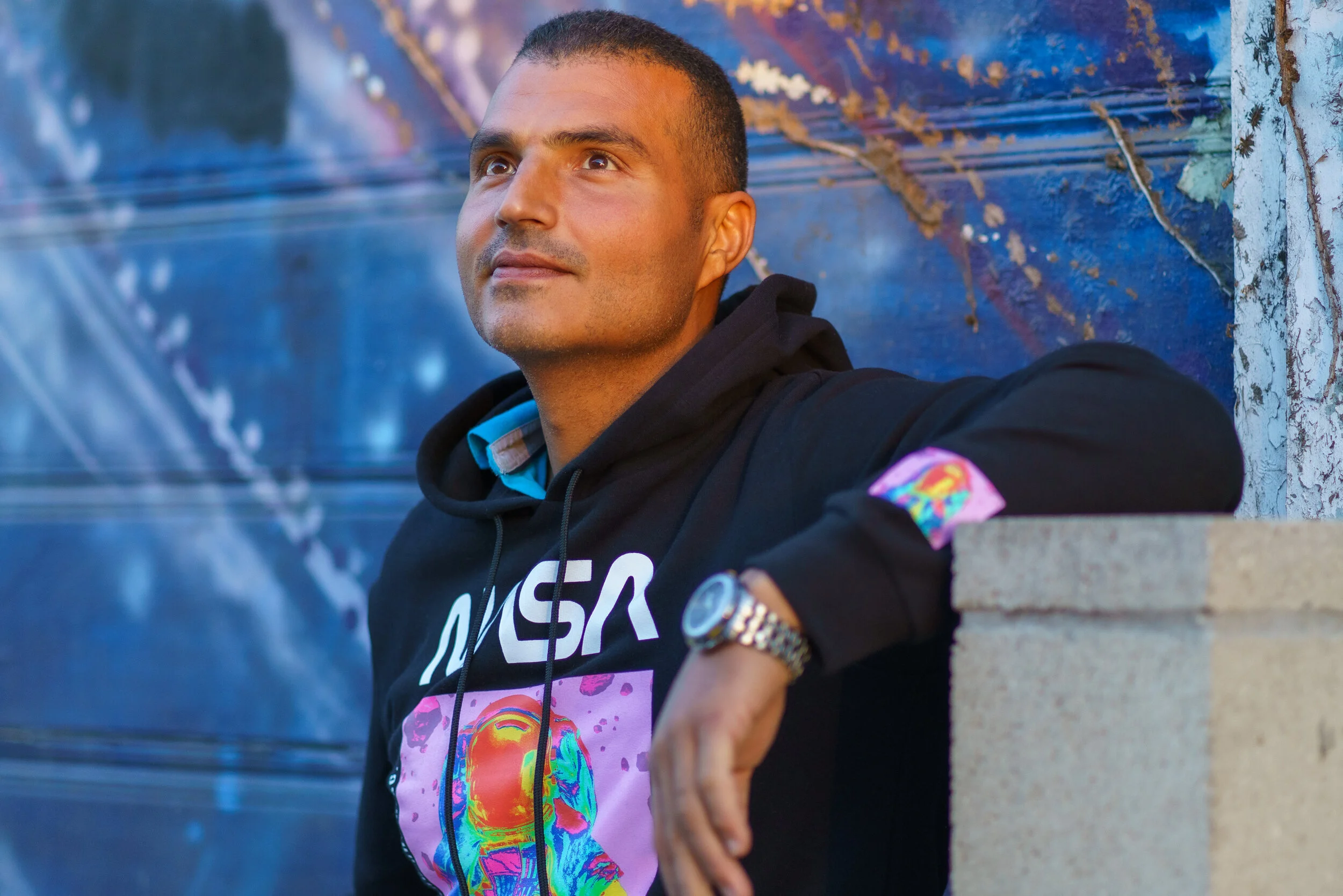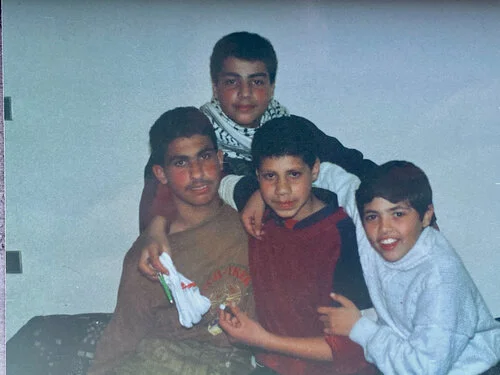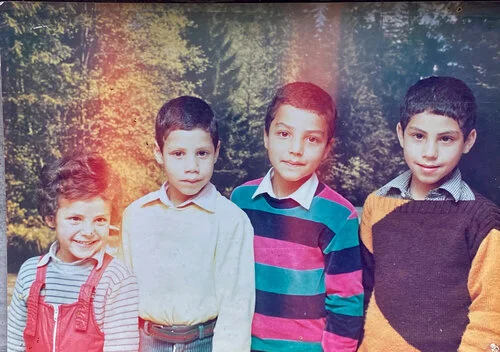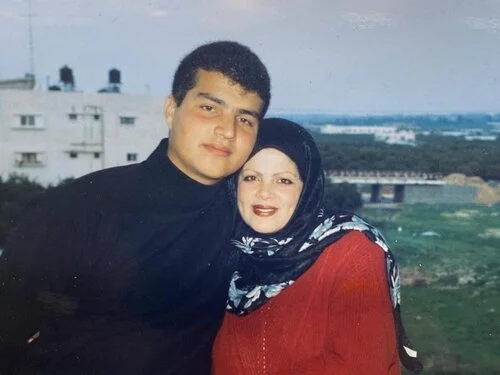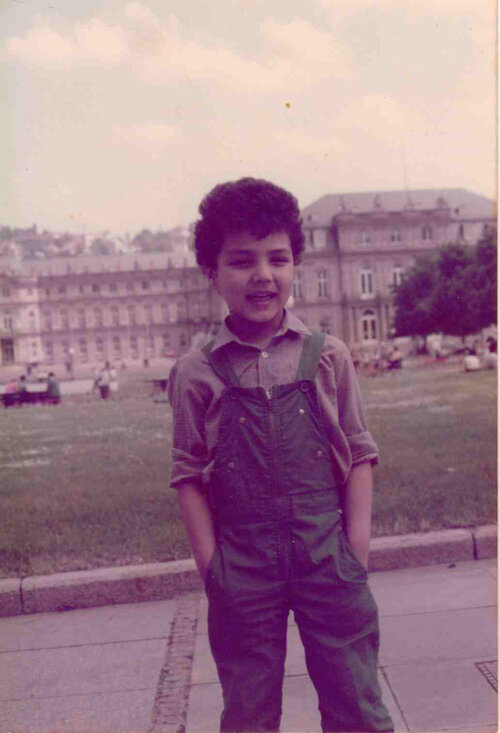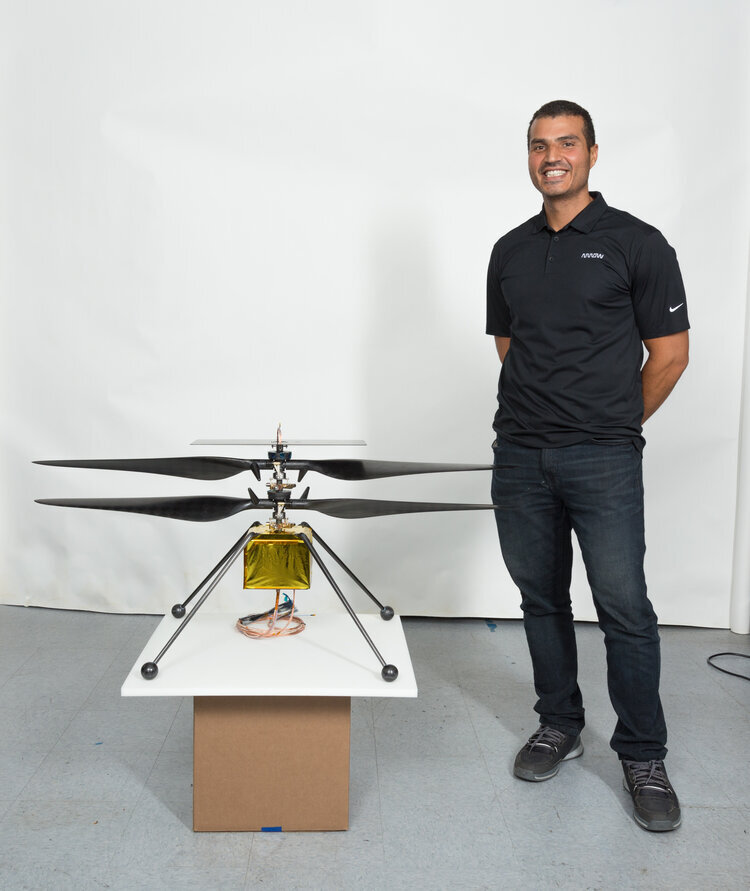When Mars is easier to get to than the Gaza Strip
You may have heard about Loay Elbasyouni, one of the engineers behind the historic first helicopter flight on Mars. He's also a Palestine refugee and a graduate of UNRWA schools. Loay generously shared more of his remarkable story with us for the Voices of UNRWA blog:
As a child, Loay Elbasyouni was always tinkering around with whatever he could get his hands on. A curious and clever child, raised in Beit Hanoun in the Gaza Strip, Loay would use pots and pans from his mother’s kitchen to build antennae so he could watch TV shows from as far away as Turkey. If anything was broken, Loay would fix it. When speaking to him, he quickly rattled off a list of household electronics he fixed in his childhood: his family’s TV, the toilet, the water pump, his uncle’s radio... the list goes on.
When he wasn’t tinkering, Loay could be found engaging the artistic side of his brain by painting, sculpting, taking photos, gardening, or writing poetry. In his 7th grade UNRWA classroom, he wrote a proof proving the Pythagorean Theorem before he was taught it in class. Fast forward a few decades and the same boy who Macgyvered his family’s television set is one of the engineers who helped build the NASA helicopter, aptly called the ‘Perseverance,’ that recently flew on Mars.
Loay was 5 years old when he moved from Germany, where he was born, to the Gaza Strip. Like most children in Gaza, Loay was a product of an UNRWA education, one that he credits for putting him on the path to where he is today. His favorite UNRWA classes were, unsurprisingly, some of the most unique and hands-on: carpentry and metalworking. He also recalls taking computer science classes and loving the process of tinkering with computers. He remembers many of his UNRWA teachers very fondly, speaking especially highly of his 5th grade English teacher, who instilled in him a passion for English, and his math teacher, who he claims was “one of the greatest geniuses [he has] met -- even better than any of [his] college professors.”
Loay went on to study in the United States, he took university classes in Nebraska, Kentucky, and Pennsylvania, but was ultimately forced to take some time off due to financial issues. In Gaza, a majority of families live on less than a few dollars a day, so the cost of college in the US created a huge financial hurdle. Ultimately, through hard work and some scholarship money, Loay ended up getting his Bachelor’s and Master’s degrees from the University of Louisville at the Speed School of Engineering.
While at the University of Louisville, he focused on electronic engineering. He was fascinated by alternative energy and how he could better the environment through his work. He thought back to the beautiful orange groves in Gaza that his family looked after and wanted to preserve them for generations to come, and saw his passion for engineering as a way to pursue this dream.
He was very civically engaged on campus, rallying for causes he believed in. He was an ‘Oxfam Changemaker,’ a role he took very seriously. He did a lot of work organizing and worked with NGOs that shared his passion for conservation. He cites a famous Gandhi quote as his mantra: “Be the change you wish to see in the world.” Loay says he embodies this by thinking of his carbon footprint and how his work as an engineer can help minimize it. He has since worked on electric airplanes and cars, and in working on the Mars project, he helped power the first purely solar-powered flight.
Loay at his father’s clinic during his last visit to Gaza in 2000
Throughout his life, Loay’s identity as a Palestine refugee has and continues to shape his identity. It has shaped where he can and can’t go, what can and can’t do, and most profoundly, it has kept him from being able to see his family for years at a time.
Loay last returned to Gaza in 2000; one month later, the Second Intifada broke out. Since then, facing visa challenges and fearing leaving the US to only be trapped in Gaza unable to return due to the blockade, Loay spent more than a decade without seeing his family. He was ultimately able to reunite with his parents in Germany in 2012, and despite his US citizenship, he still faces challenges traveling in and out of Palestine. For Loay, Mars is more accessible to him than his home in Gaza. Despite these hardships, he said his refugee roots also instilled in him the value of persistence and forced him to never take ‘no’ for an answer.
What’s next for Loay? He says he’s always wanted to start a company that makes alternative energy or alternative transportation. Whatever he ends up doing, or wherever his promising career takes him, we’re sure Loay will continue to be the change he wishes to see.
May 2021 update:
Between May 9 and May 20, the Israeli military ruthlessly bombed the besieged Gaza Strip, killing at least 230 Palestinians, 67 including children, UNRWA students, and whole families. Under such attacks, the people of Gaza have nowhere to run, nowhere to go that is safe. Lives, countless residential buildings, businesses, and streets have been obliterated. Included in the damage are UNRWA schools and the Agency's Gaza headquarters. Beit Hanoun, where Loay grew up, was attacked on May 13, 2021, killing 21 civilians. 21 people who could have lived to do incredible things like Loay, if they had only been given the chance.

